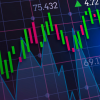Now that you have done an impressive job of accumulating your retirement funds, the next step of figuring a strategic means of distributing those funds with minimal impact on the tax efficiency of the various retirement accounts. However, this is often the hardest part. It involves calculating your retirement resources in a way to determine a smart way to maximize your benefits.
Although everyone reserves a unique situation at the point of retirement regarding financial circumstances, needs and goals, there are a couple of strategies that cut across the retirement funds distribution process when planning your strategy. Consider the following few approaches to get you on the right track:
Different Ways You Can Make Use Of The Retirement Funds
There are multiple ways you can make use of the retirement funds to develop your financial planning for the future. Work out the strategy that can work well in your favor. Work out the best plans that can help you to lead a stable life in your fifties.
1. Do an inventory
Before you can figure out a withdrawal strategy, you must fully understand the available retirement resources so you can exploit them optimally. An inventory will give you a clear picture of the records you need to consider, among them, pension, social security, health savings account, ownership or interests in a business, real estate, FSBO Businesses, among others.
All these assets are significant, but you must analyze what it really means and how it can work for you. What this means is that some assets have an income stream, while others do not. For those with an income stream, determine when the income will start coming in, for example, pension.
2. Understand the rules for your retirement assets
As enlisted above, the retirement assets differ, and in this case, in the kind of returns, you get. With some items, the benefits of the assets increase every year, up to a certain limit. Consider, for instance, a pension. While you may receive a pension as early as 55 years of age, waiting until 65 can maximize your benefits.
Understanding the rules for the assets allows you to make a calculated projection of how the overall retirement resources can benefit you a long while. While some people still work part-time jobs after retirements, the needs of people differ, and depending on what your needs are, with some assets, the longer you wait, the better your results. Remember that the resources need to support a reasonable life expectancy and that each plan is usually different.
3. Strategize your withdrawals
The biggest mistake, common among people, is the assumption that they know how much to withdrawal. Fundamentally, the values in your accounts and your age, determine how much you can withdraw. Taking out more funds than you are required to attracts more significant income tax, and if you are not careful in your bulky withdraws, you could easily sacrifice the potential future tax-deferred growth of those funds.
While your needs could play a big role in influencing your withdrawals, you must be smart and strategic. For instance, since the government allows you to delay your retirement distributions until around age 70, then that means you have to wait a longer period of time translating to withdraw more money.
4. Use the calendar to your advantage:
The time of the year you consider your withdrawals has an often unseen impact on your fund distribution. The idea is to cut down on income tax for your distributions.
For example, if you take a distribution on 1st of April, you would need another before 31st December, which would require that you pay income tax on multiple distributions.
5. Consider all accounts
In your strategy for retirement funds distribution, you must calculate the required minimum distribution (RMD) for each of the accounts. Considering all your retirement accounts allows you to analyze all the assets you have.
Still, you do not have to withdrawal from all accounts. The idea is to ensure that all your withdrawals, whether from one or several accounts, is that the money you take out must meet the overall required distribution. If managing all your accounts gets too overwhelming, consider a Rollover IRA to help you with consolidating your retirement savings.
6. Avoid guesses and calculate
Every year has a different economic environment from the previous. You can therefore not assume that your RMD withdrawal amount is the same every year. Depending on the value of your retirement accounts, the year, and your age, you should be able to calculate the changing RMD in comparison with your cash flow needs, so you can determine whether your withdrawals would be enough to meet the requirements.
Overall, some of these strategies might be cumbersome and overwhelming for you, particularly with age, and multiple retirement accounts to consider. For this reason, as you consolidate on those strategies, employ some insights from a tax advisor to help you understand the processes.
Read Also:






















